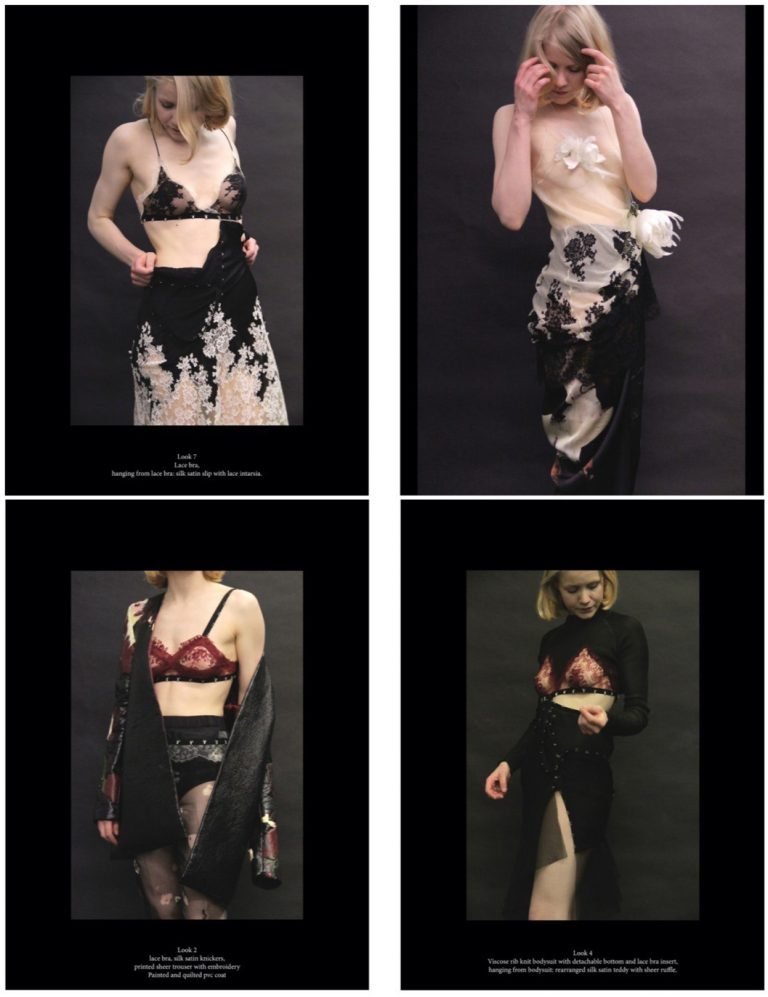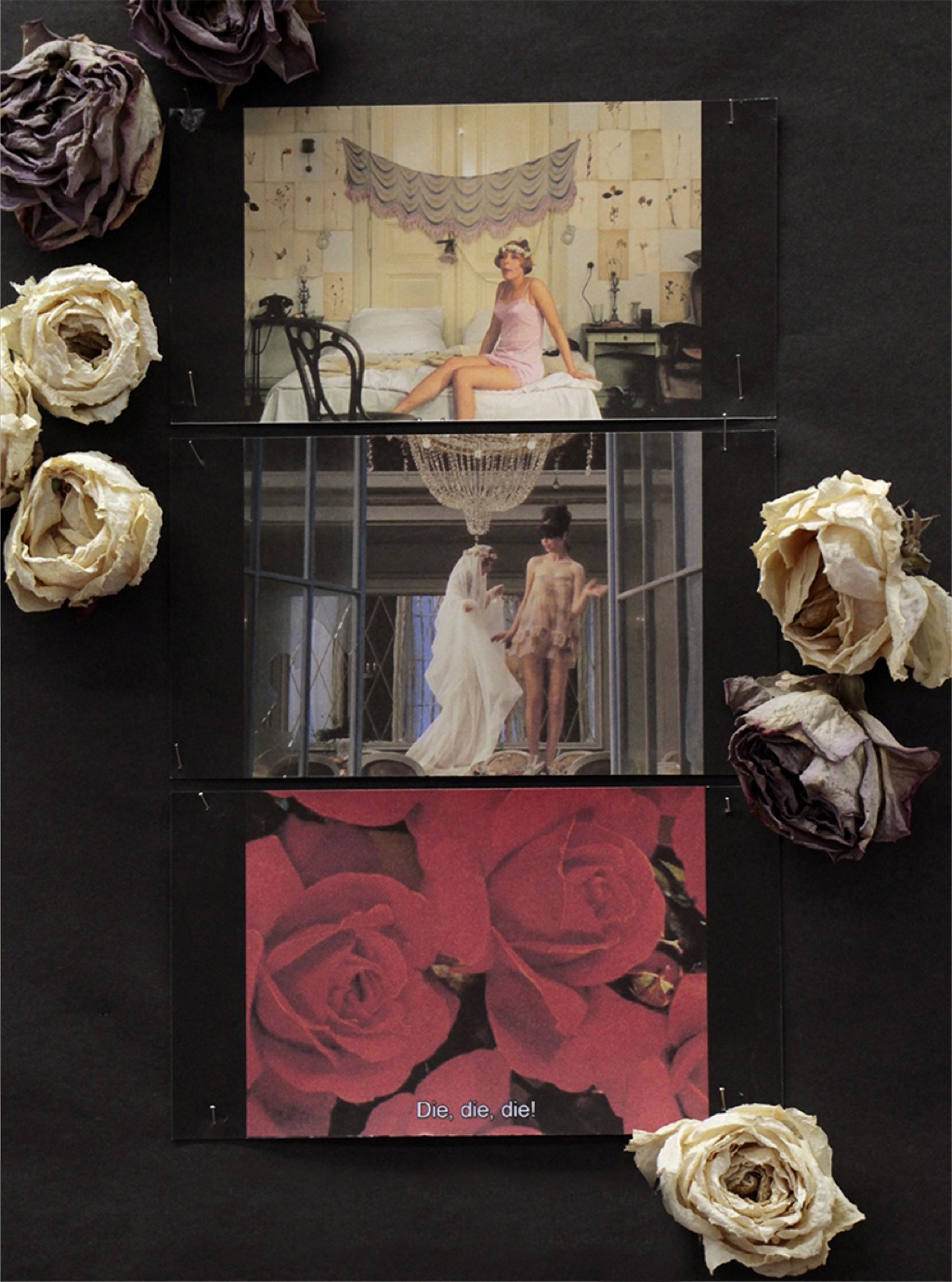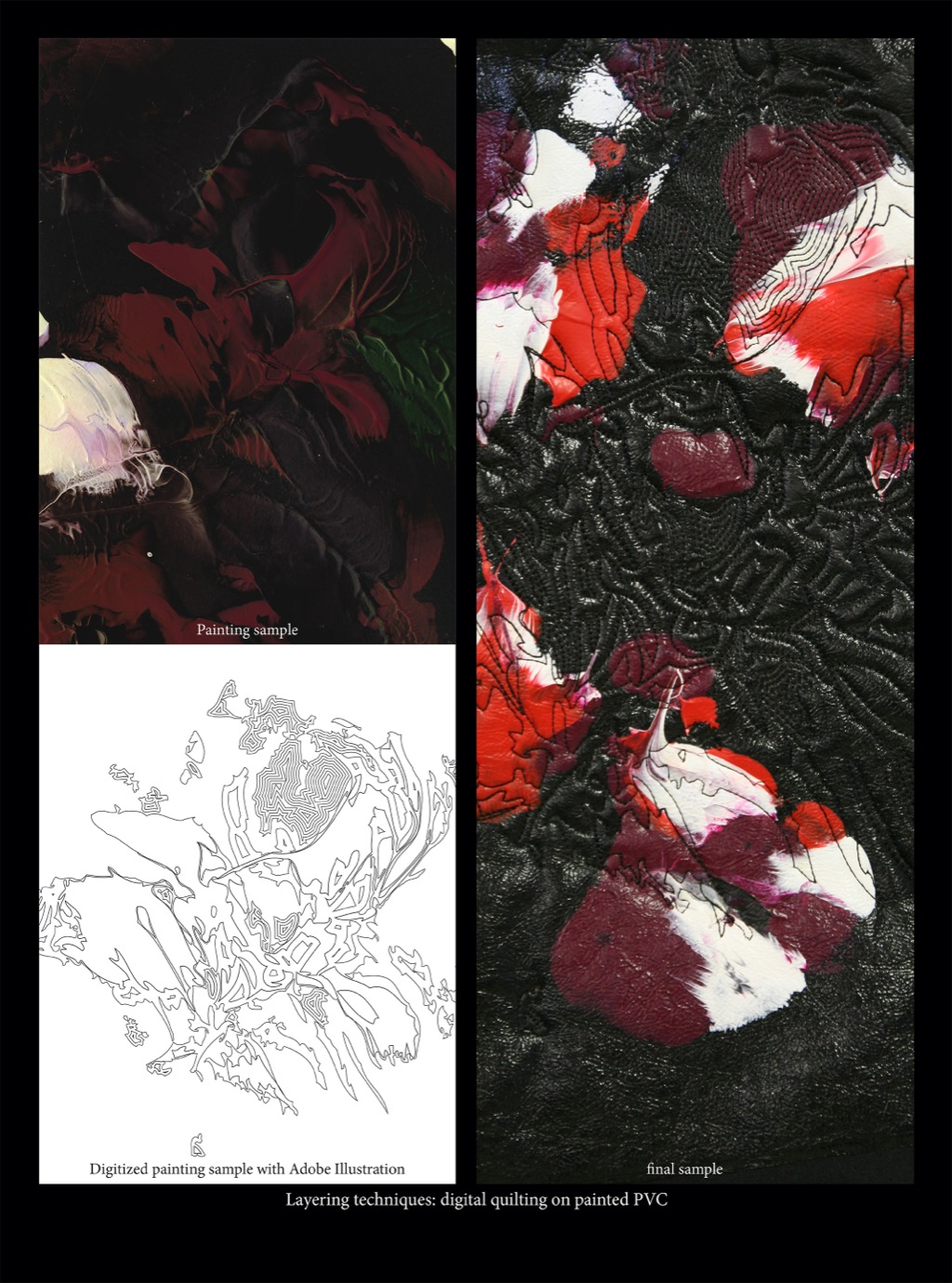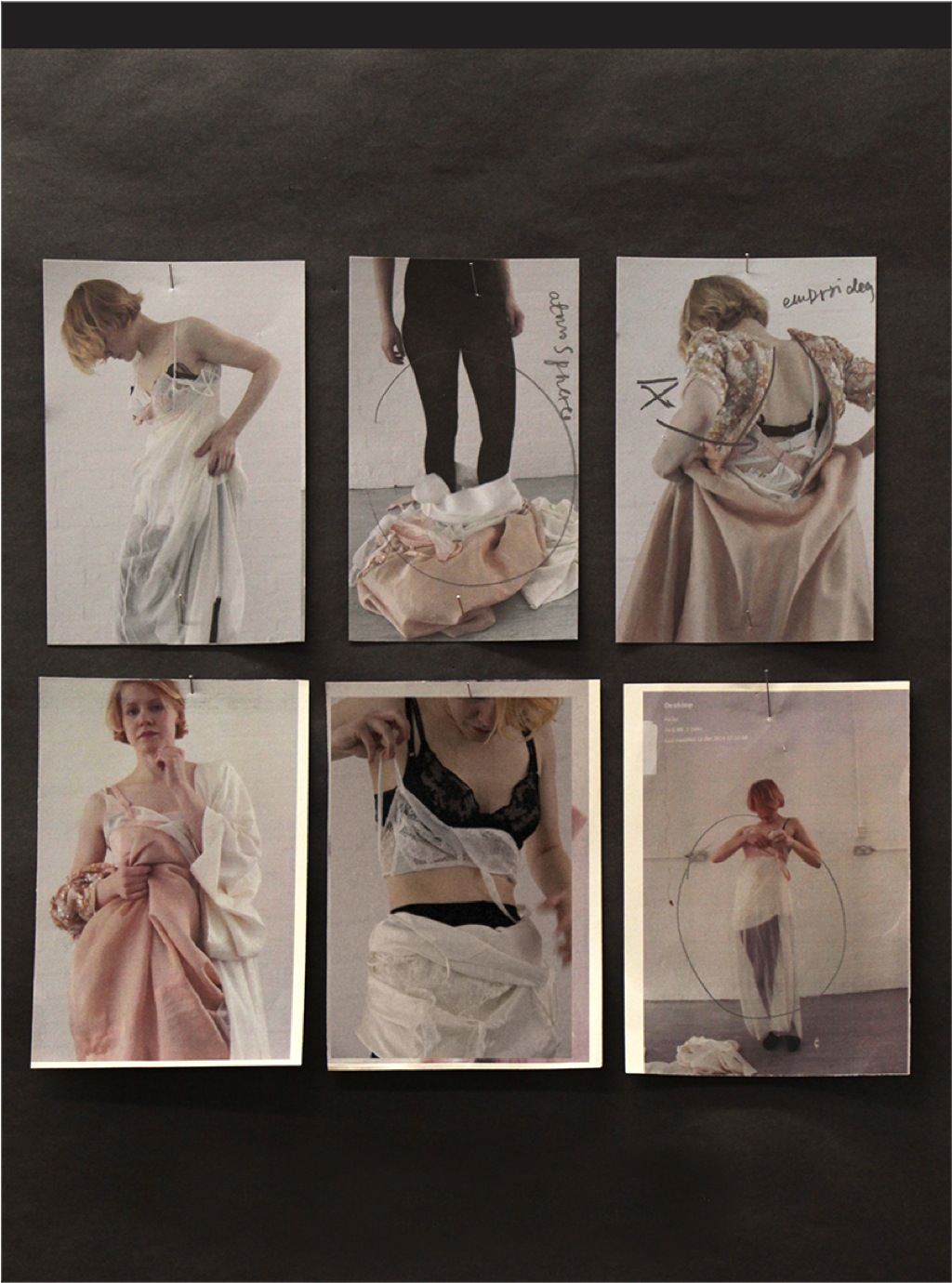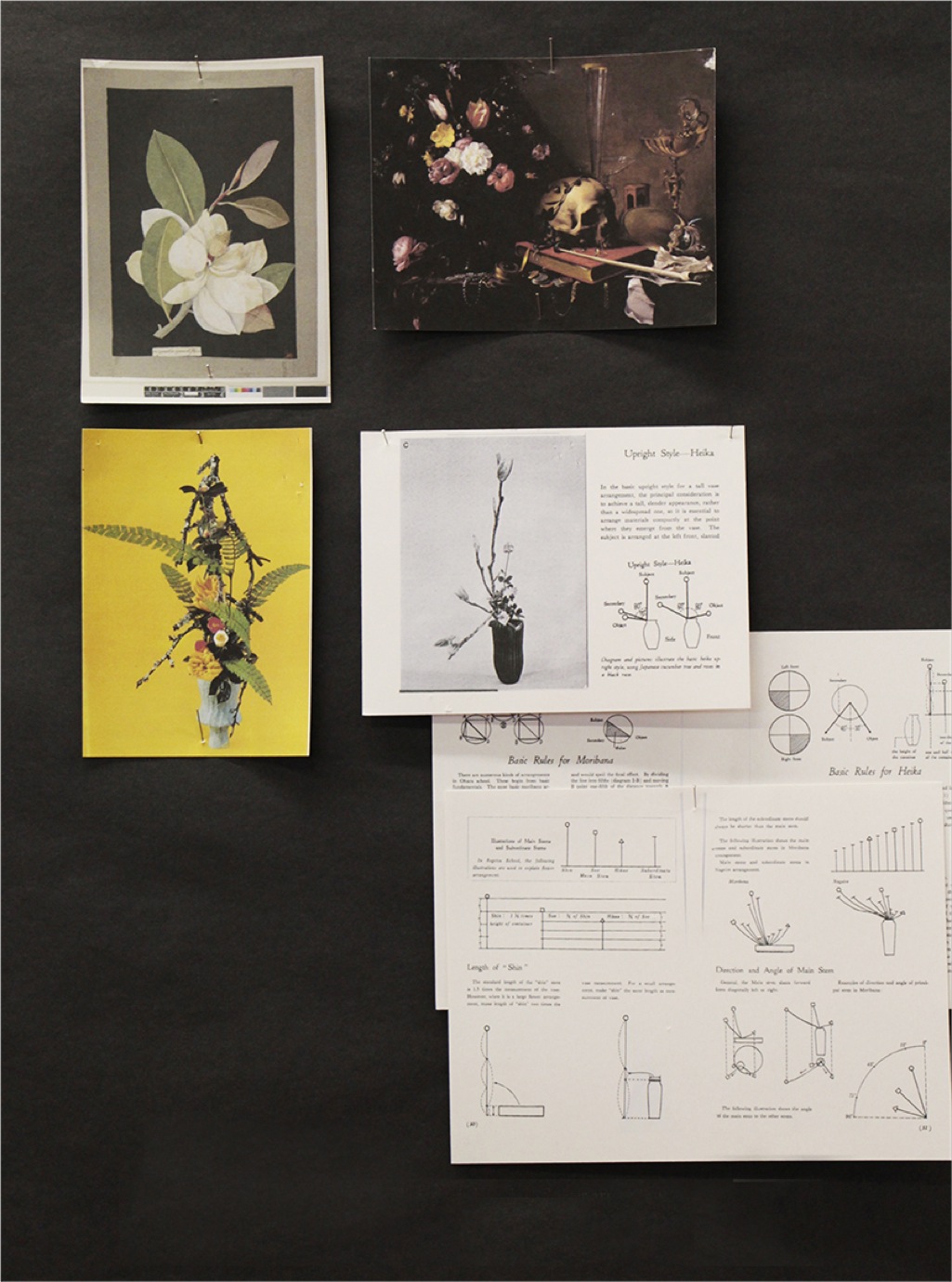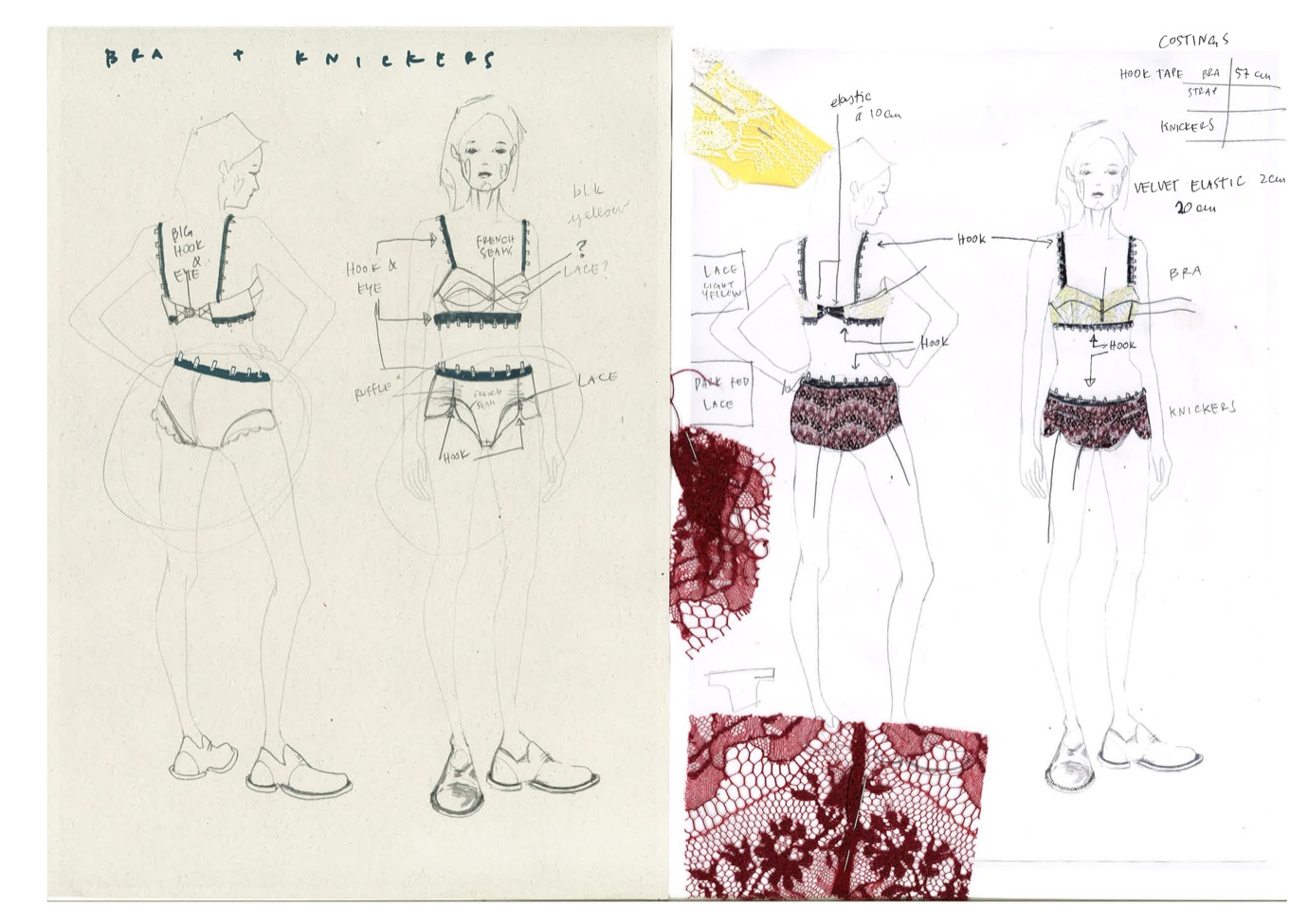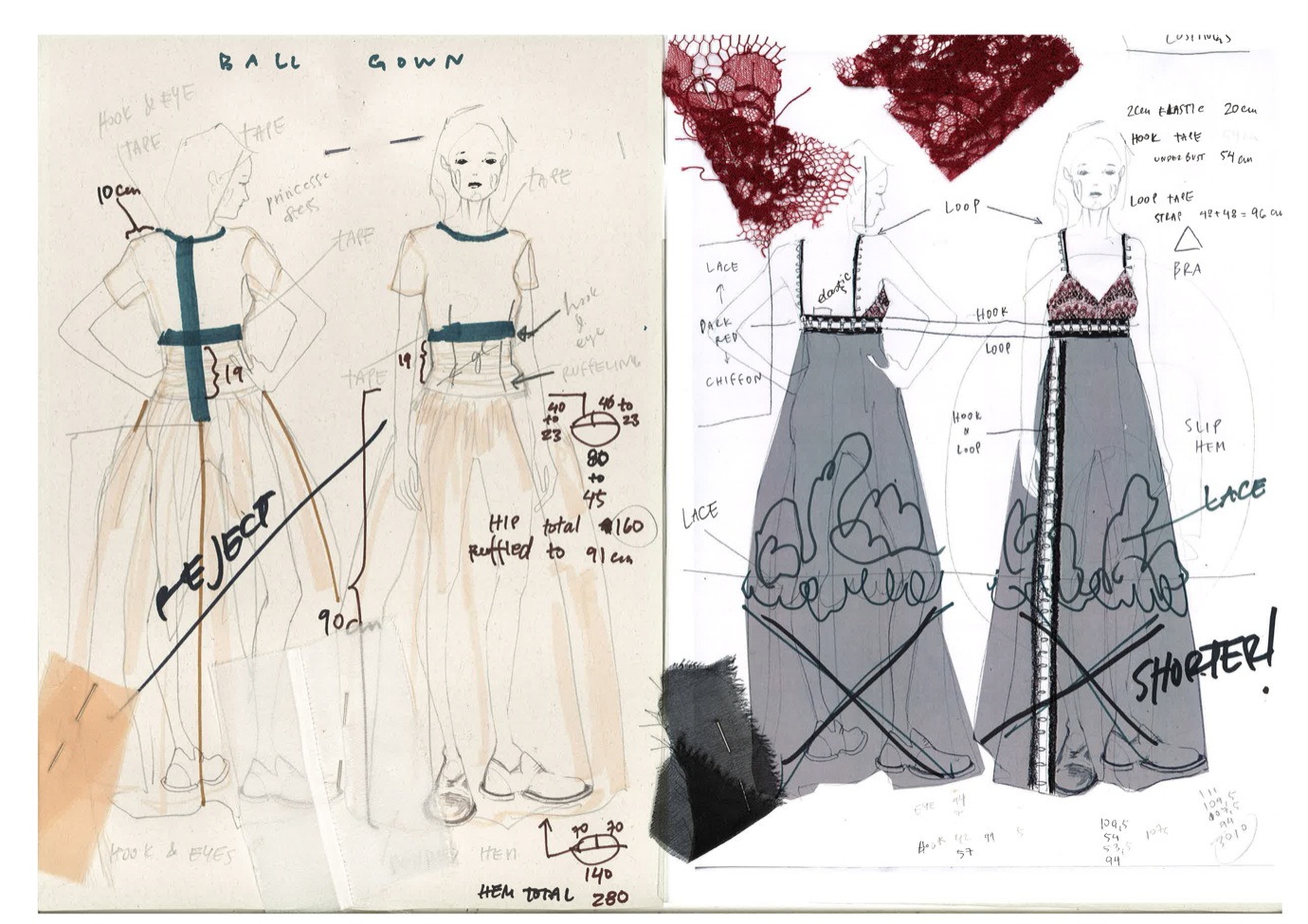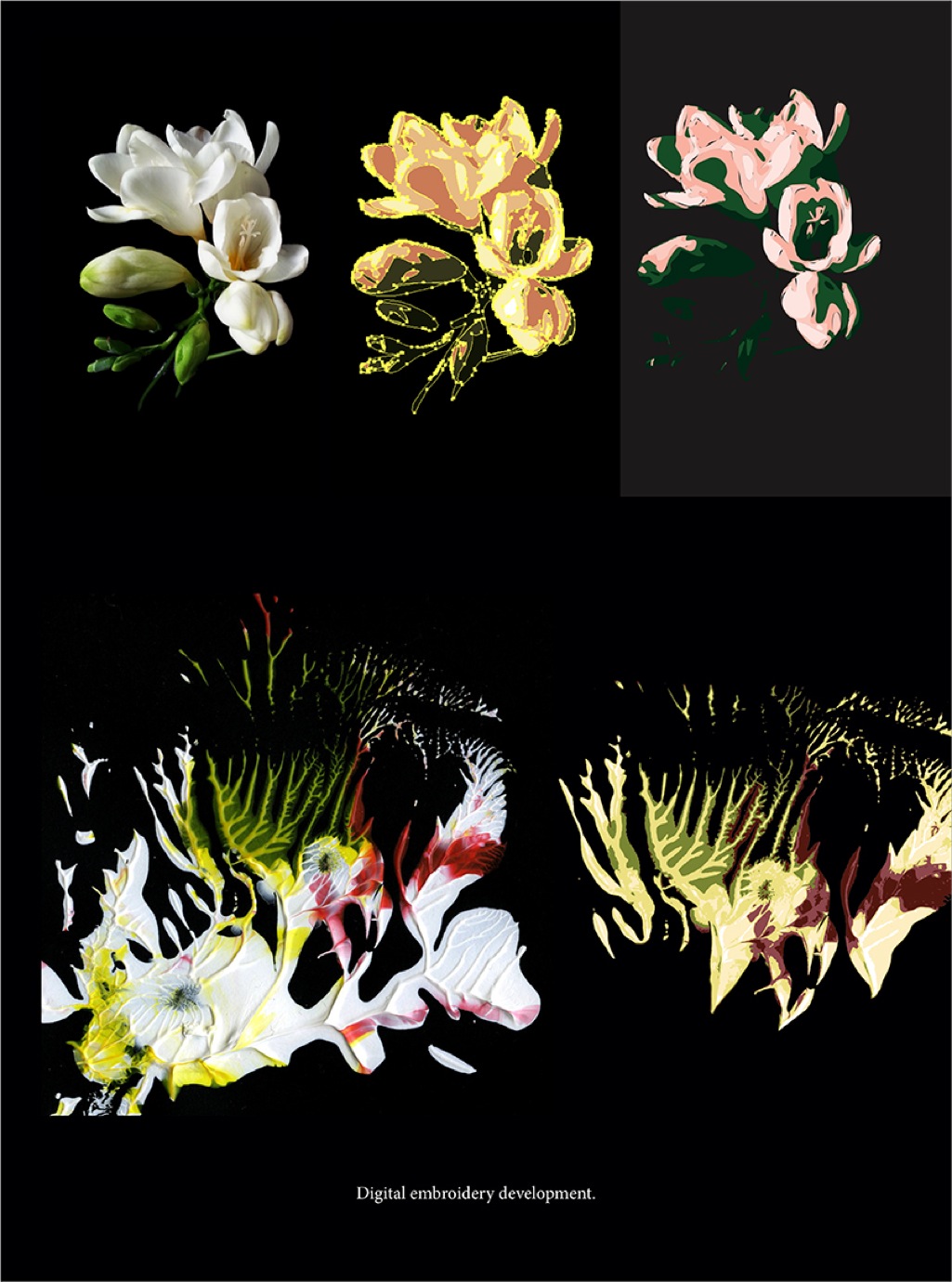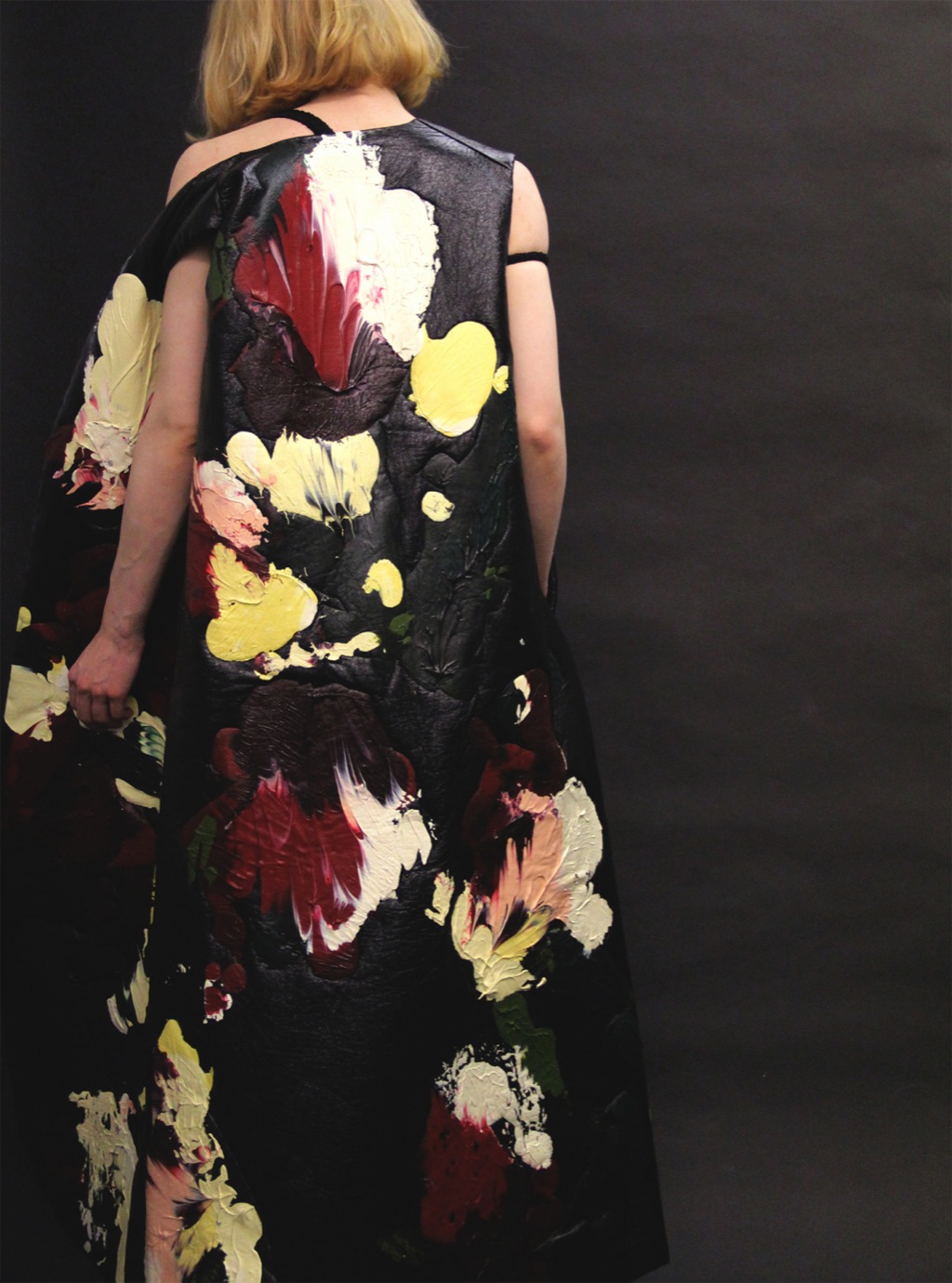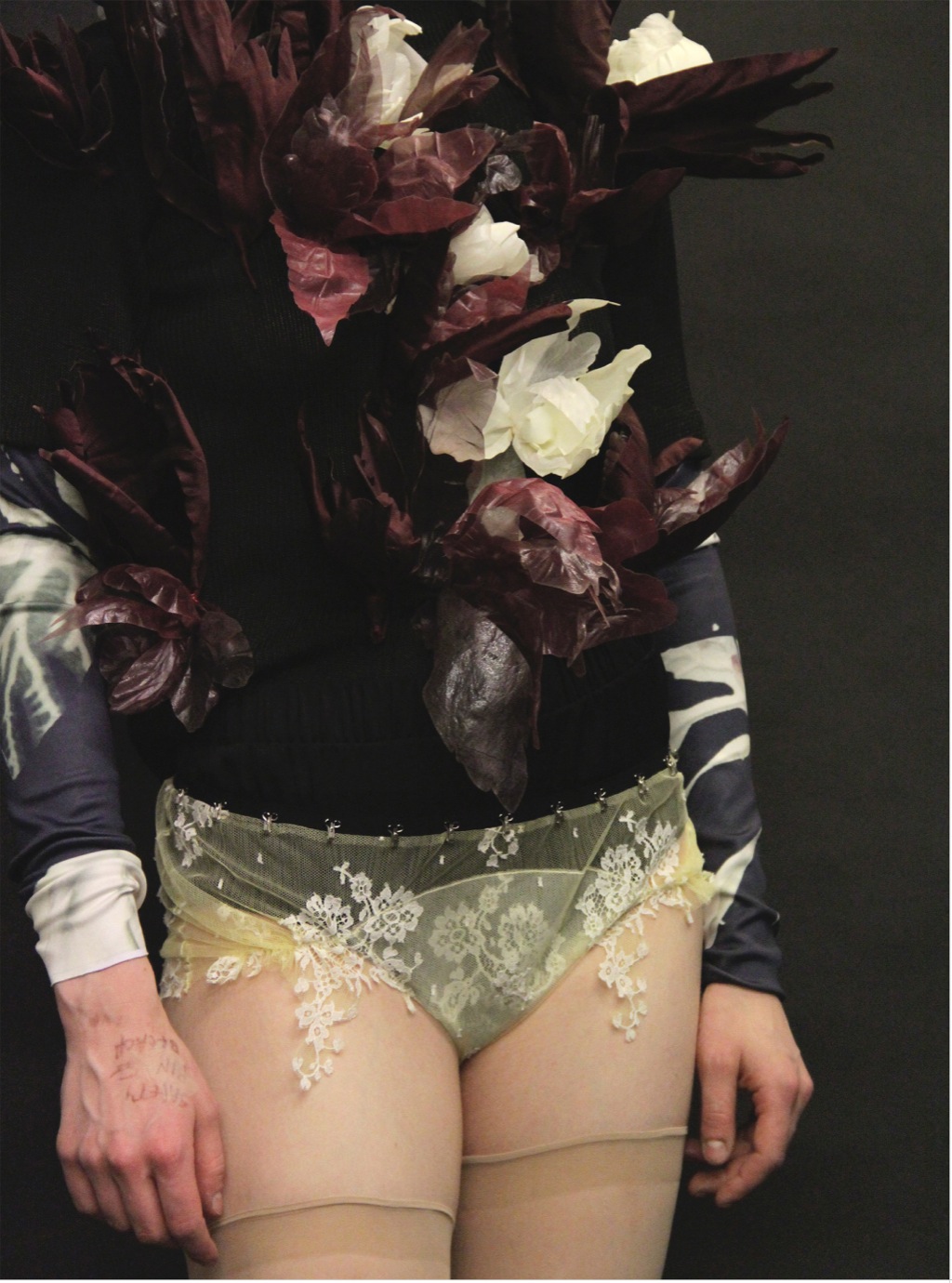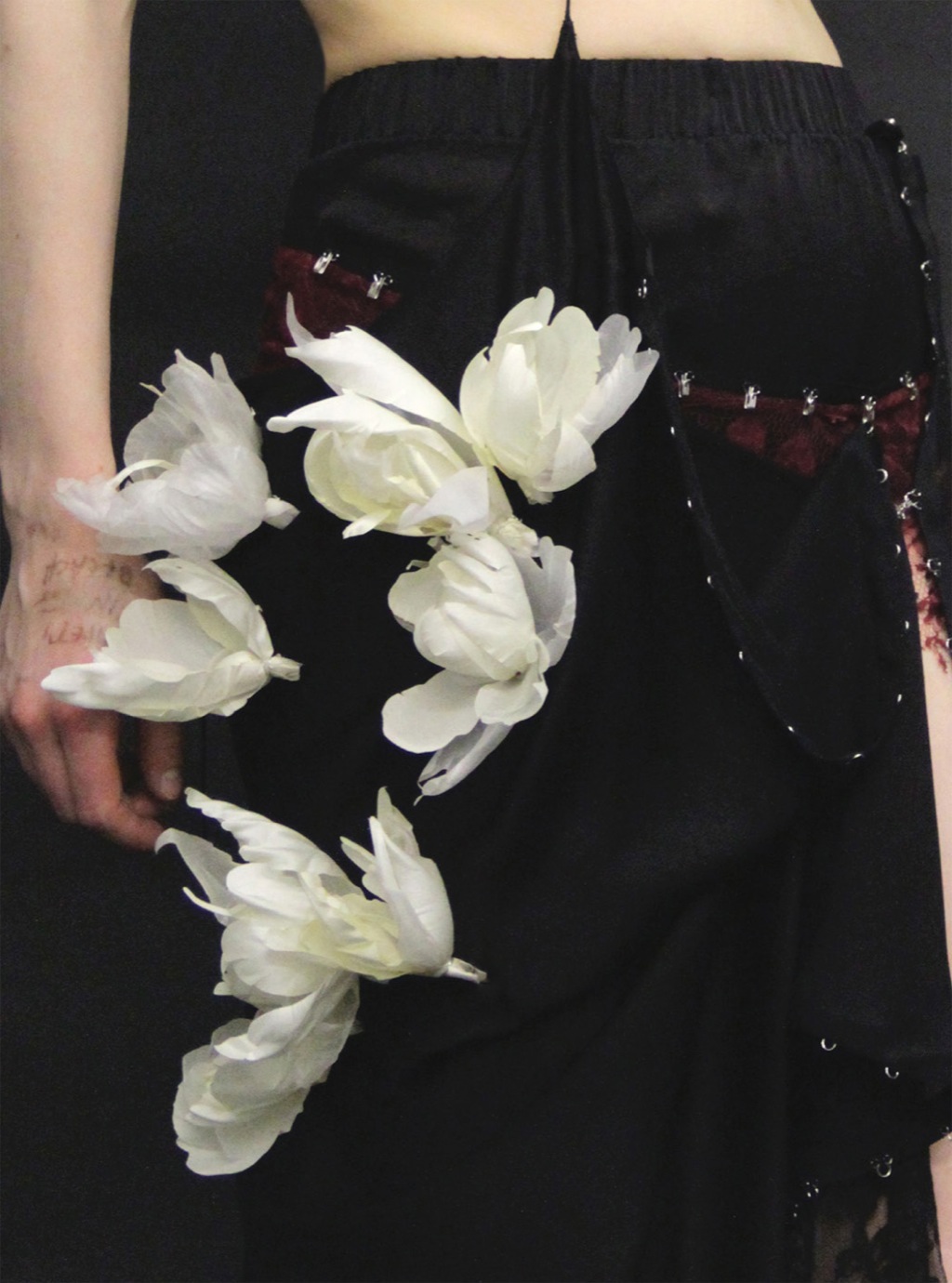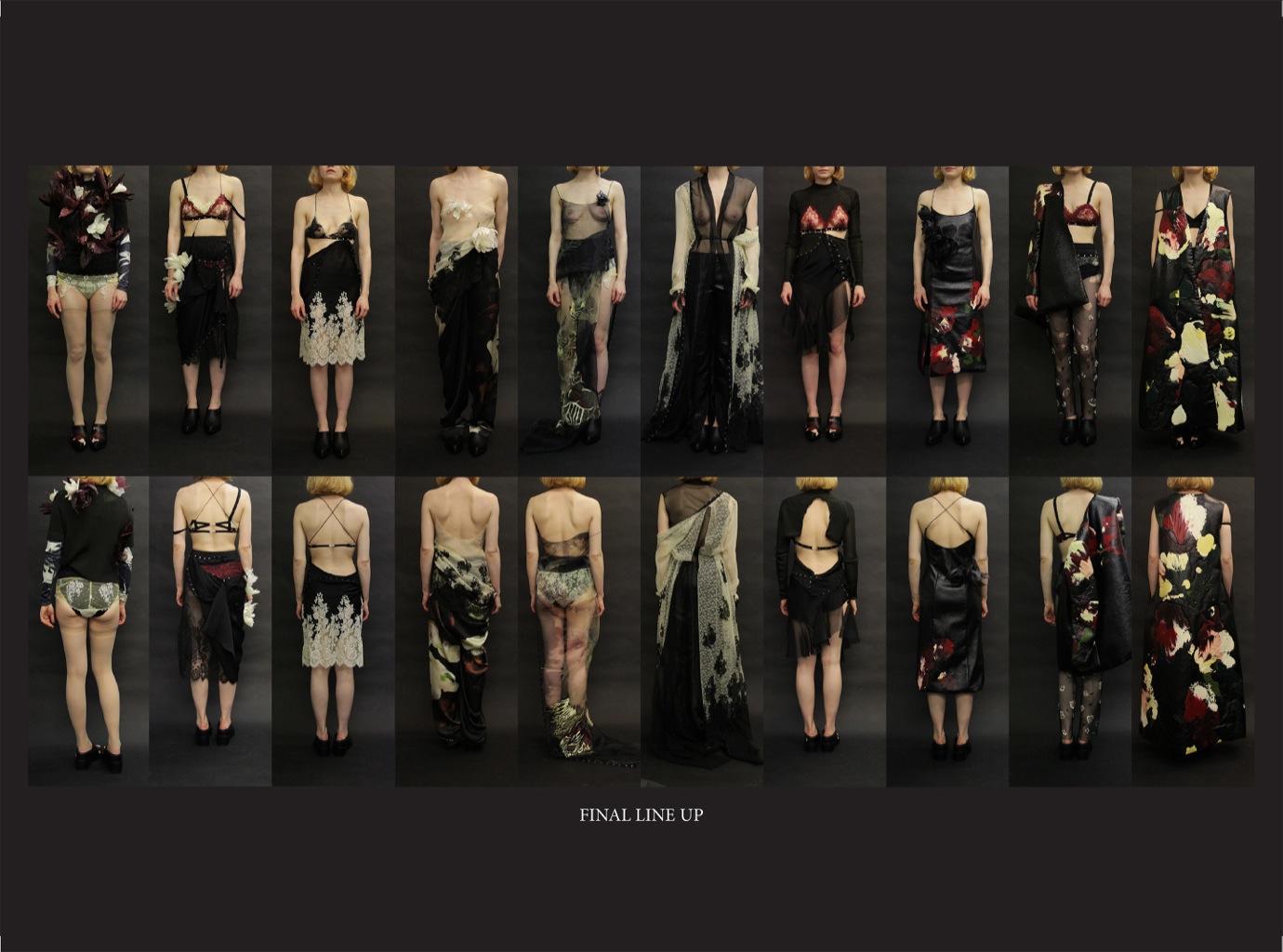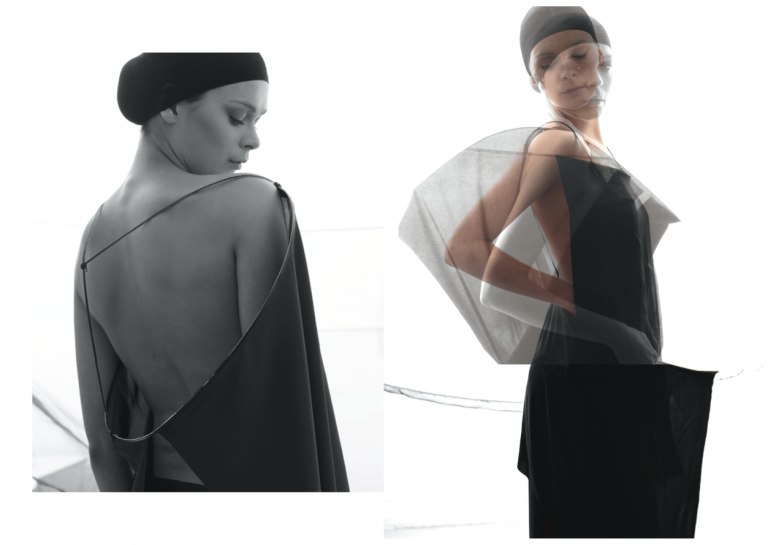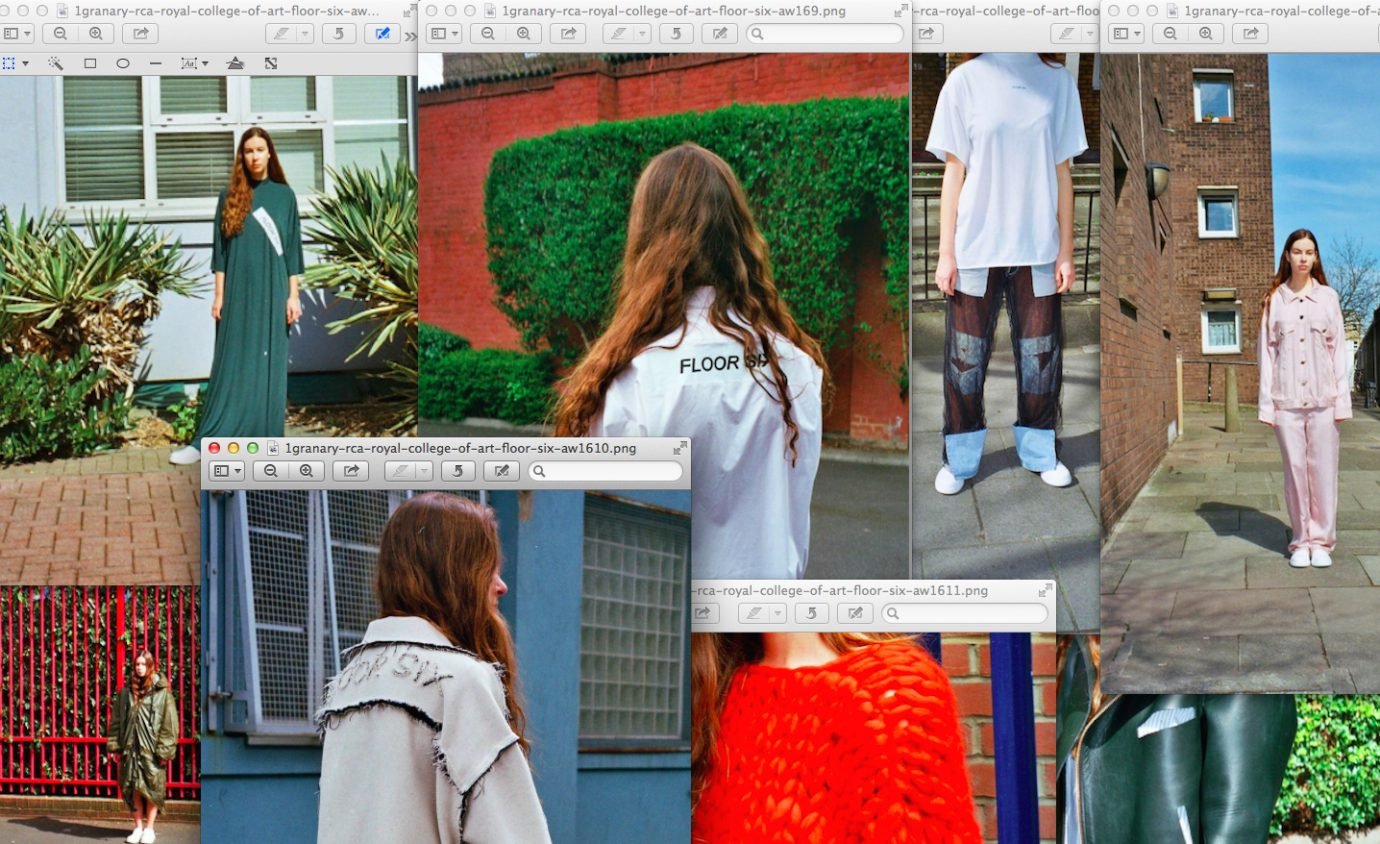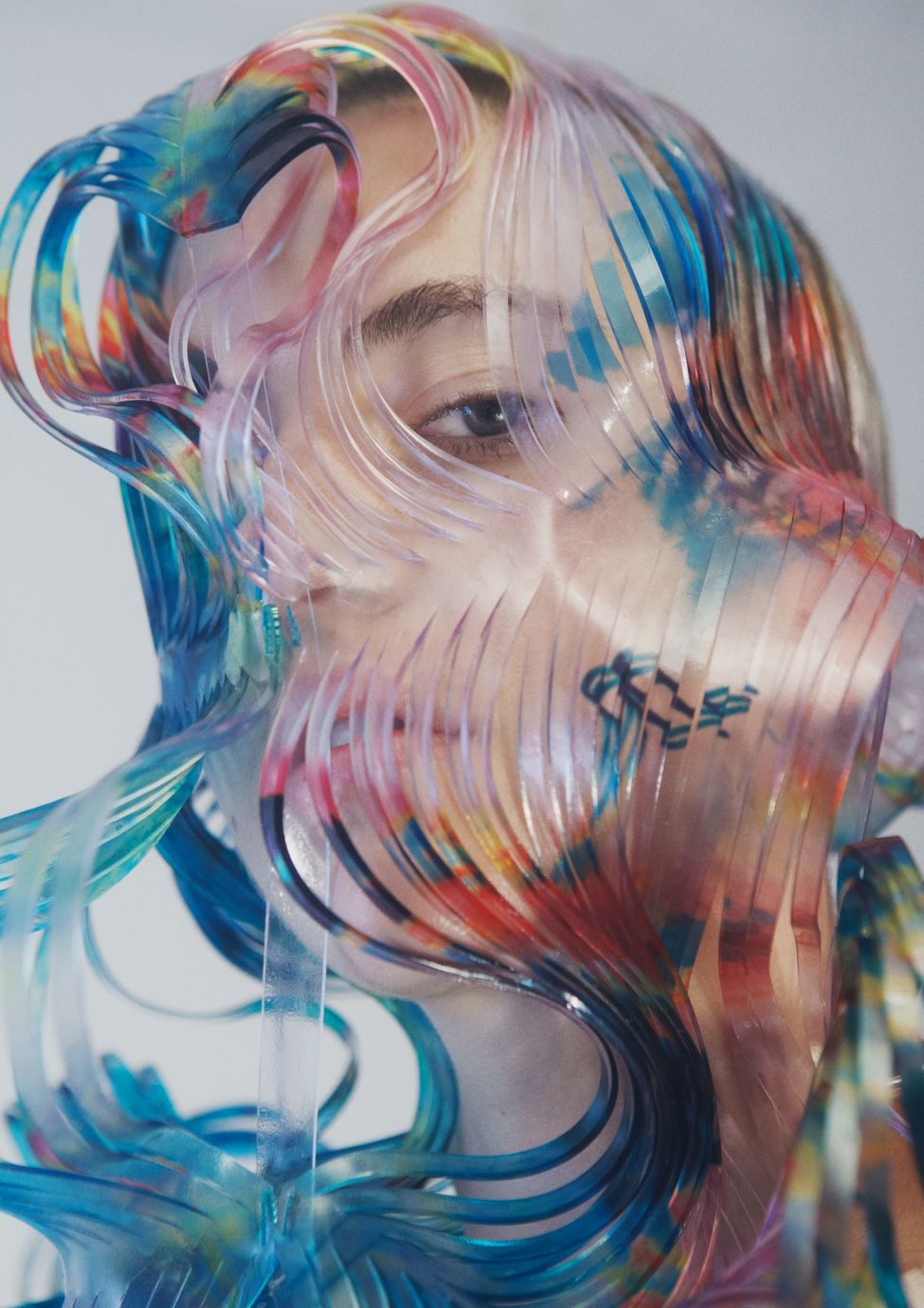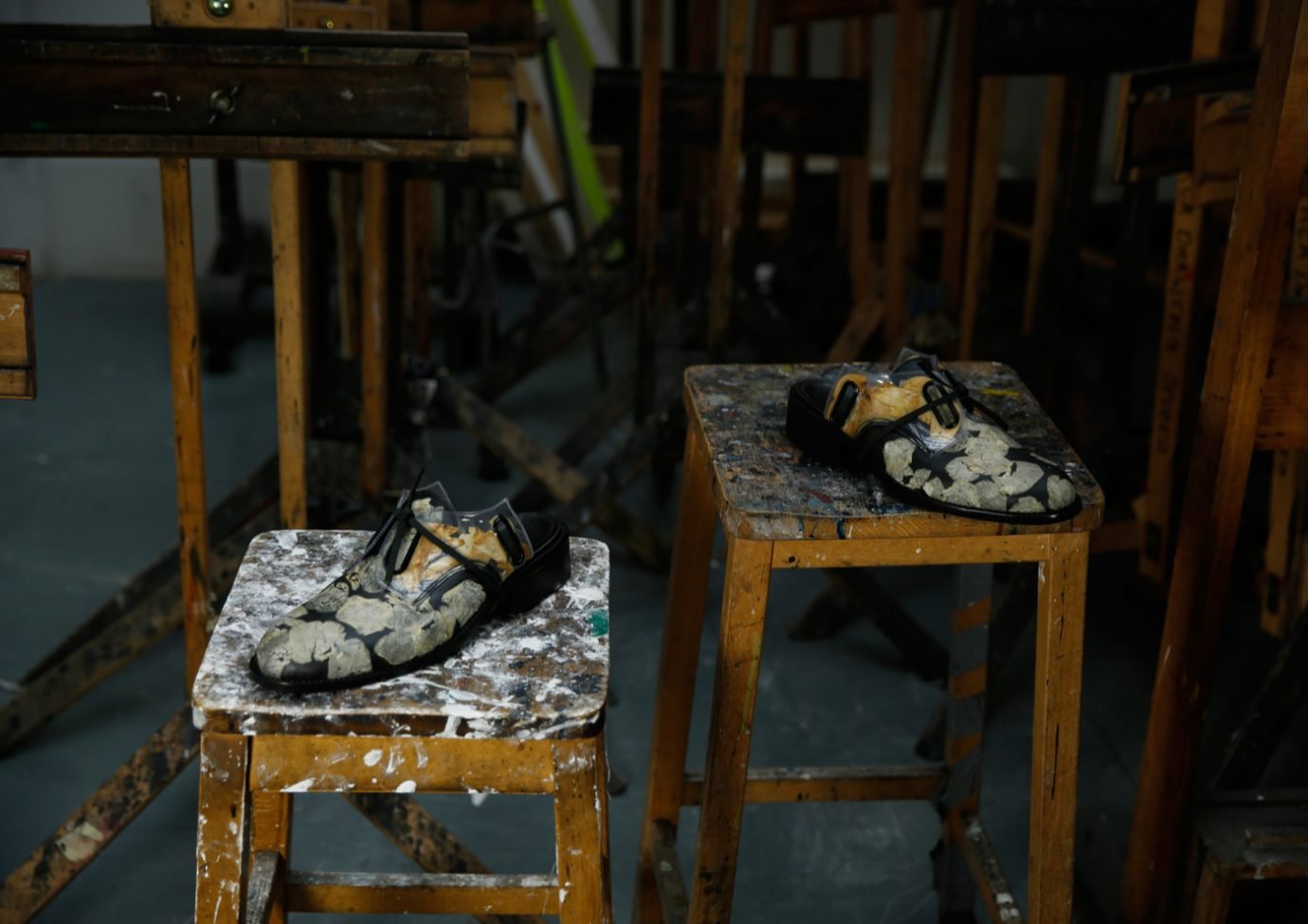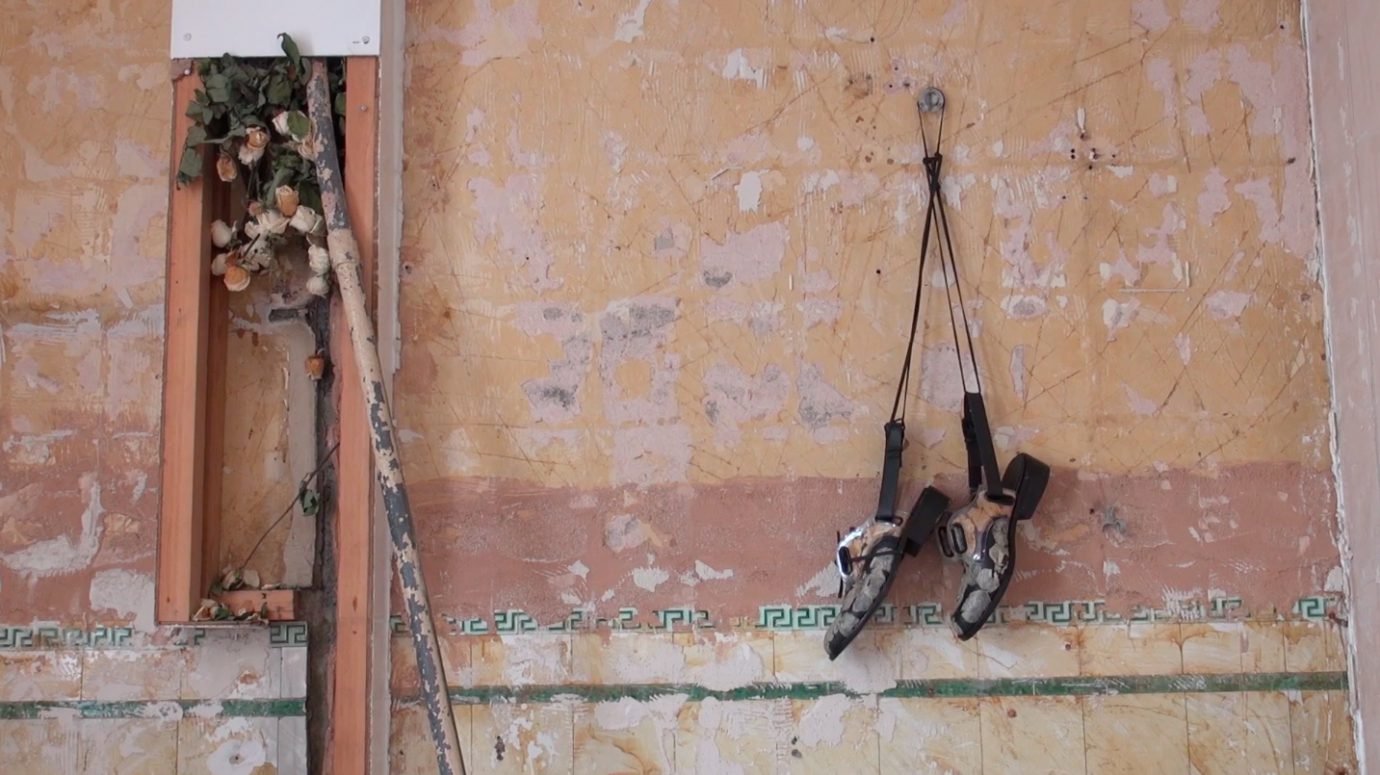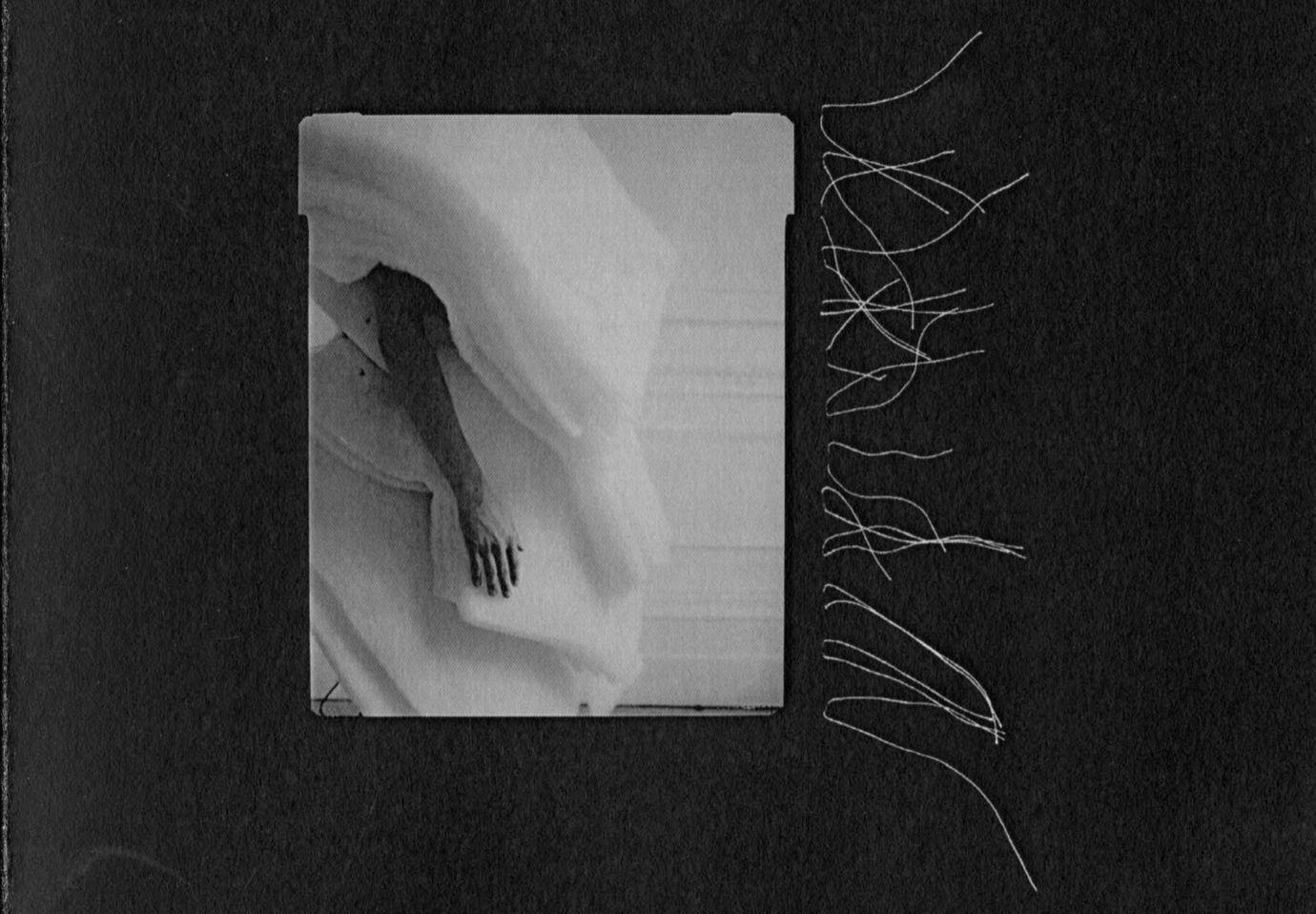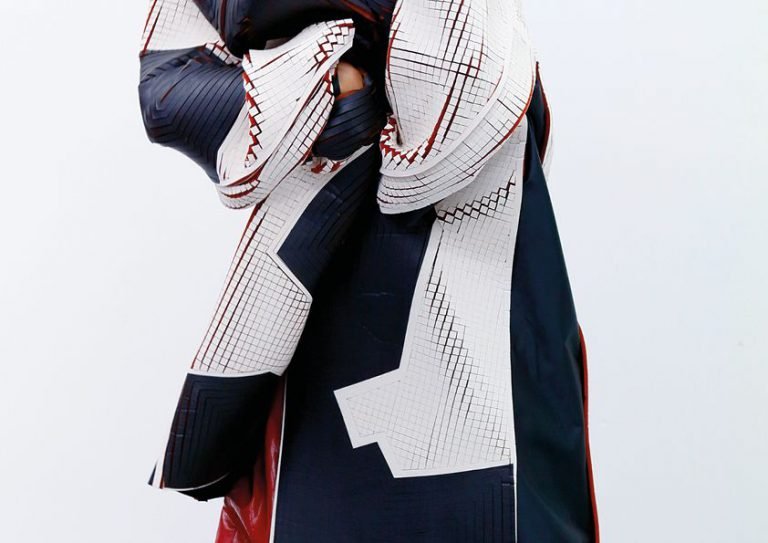Vivi Raila’s path to an acclaimed floral-bomb of a show at The Royal College of Art began in Turku, a coastal town overlooking Åland Islands in the South West of Finland. There, she studied fine art while at high school, and wanted to head to Helsinki (the capital) to study fashion at Aalto, the prestigious design university that carefully admits only 12-15 students annually. “I was told by my fine art teachers in high school that nobody gets into Aalto on a first try,” she explains over e-mail, “but I still tried out of curiosity and managed secure myself a place.”
That is not to say that Vivi was the quintessential fashion-craving, model-drawing teenager, who had dreamt of fashion school since before she could walk. “Sadly, I wasn’t one of those people who would read i-D from cover to cover in their pre-teens,” she remarks – “I wish I was. When I applied to study fashion I did not have a clue what I was putting myself into. I thought I was going to learn about creating and designing garments but ended up learning a lot more.” Nonetheless, looking back, she recognises an early interest in the visual and tactile elements of culture, always embedded in a physical object. “For me, the focus has been always in the product, but I’ve learned that the way you see a product is due to everything around it: the branding, the campaign conception, the model, the set, the photographer, etc.”
“SADLY, I WASN’T ONE OF THOSE PEOPLE WHO WOULD READ I-D FROM COVER TO COVER IN THEIR PRE-TEENS – I WISH I WAS. WHEN I APPLIED TO STUDY FASHION I DID NOT HAVE A CLUE WHAT I WAS PUTTING MYSELF INTO.”

